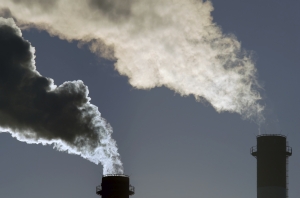Despite adopting a ‘soft’ emissions target in comparison to its global peers, the Australian economy will still be required to undergo a significant transition in order to meet the government’s new post-2020 emissions goal.
The Electricity Generation, Fugitive Emissions and Forestry sectors will play a critical role in the transformation of the Australian economy in order to meet Australia’s new post-2020 emissions reduction target, contributing over 50 per cent of Australia’s emissions growth to 2030, while at the same time representing Australia’s greatest opportunity for emissions reductions.
Notably, each of these industries will require policy intervention to unlock its abatement potential, while inversely, even a minimum long-term target of 26 per cent on 2005 levels by 2030 is unlikely to be met should this abatement not be unlocked.
Subsequently, emissions reduction opportunities from these three key sectors are critical to meeting Australia’s new post-2020 pledge. In this Market Update, we examine the abatement potential of each of these opportunities in detail, along with the associated policy implications.
Key findings:
- Government Business As Usual (BAU) projections indicate that Australia will be required to reduce emissions by over 2,500 million tonnes between 2015 and 2030 to meet the new emissions target. We place this figure at well under 2,000 Mt due to reduced economic activity over the outlook period.
- While this is a significant task, early action in the three sectors identified will have a compounding effect on the abatement challenge. As a result, Australia’s cumulative challenge will become easier to reach as action occurs to progressively reduce emissions.
- Current policy, including the Emissions Reduction Fund and the newly agreed Renewable Energy Target is unlikely to trigger substantial change in the identified sectors, with just 300 Mt CO2e abatement projected to occur through to 2030.
- Under these conditions, we continue to view coal generation as the continuing lowest priced dispatachabe generator in Australia, with existing black and brown coal generators projected to capitalise on an increase in demand, prolonging the use of aging and inefficient infrastructure.
- Even should a decreasing demand trend return to the market, brown coal generators are projected to place pressure on high-cost black coal to exit, resulting in even higher emissions intensity across the Australian economy as low-cost brown coal generators pick up the supply gap.
- In parallel, we continue to project a significant rise in fugitive emissions to 2030, even accounting for immediate abatement which we project will be contracted by the ERF. Although best practices and technologies exist to reduce fugitive emissions there is currently little financial incentive for the full potential of this abatement to occur.
- Should policy intervention be undertaken, we estimate the abatement potential within the electricity generation, coal mining, LNG and forestry sectors is immense, with over 3,000 Mt/CO2e of emissions reductions available through to 2030. The orderly exit of the most emissions intensive coal fired generators, and large-scale abatement from ventilated air methane projects and less-gassy mine development is projected to make up around half of all abatement opportunities.
- The abatement potential of Australia’s forestry sector is almost larger in absolute magnitude than electricity and fugitives opportunities combined.
- From commercial long-rotation hardwood plantations to continental-scale environmental plantings that link stranded pockets of biodiversity, the abatement potential of the forestry sector is significant, while being large-scale, national in scope, and offering a broad range of co-benefits such as job creation.
- This upside potential is not free and occurs over long timeframes, yet in light of the large amount of land Australia naturally possesses, the land-use sector represents a hidden ace-in-the hole for Australia to fulfil its abatement challenge through domestic investment.
Learn More
This report is published under RepuTex’s Carbon Market Intelligence services, providing detailed analysis, outlooks and pricing information on the Emissions Reduction Fund, the Safeguard compliance market, Australia’s post-2020 target and policy developments, including the ALP’s proposed Emissions Trading Scheme.
To learn more about this report, please click here.










